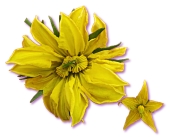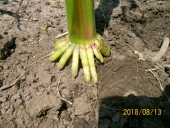
 3
3




New location. Zone 6b, acid soil, 30+ inches of water per year.
https://growingmodernlandraces.thinkific.com/?ref=b1de16
Growingmodernlandraces.com affiliate








New location. Zone 6b, acid soil, 30+ inches of water per year.
https://growingmodernlandraces.thinkific.com/?ref=b1de16
Growingmodernlandraces.com affiliate

 2
2








Joseph Lofthouse wrote:This trait is called andromonoecious: having a mix of male flowers and perfect flowers. While it's not common in watermelon, it is a known to occur in watermelon, cucumbers, and muskmelons. I wouldn't select against it. Seems like it may be a good trait to have in a population that was growing in an area where pollinators are sparse, or where there is a lot of rain that interferes with pollination.
At least for me, I tend to do very few manual pollinations. And of those that I attempt, it's rare for me to emasculate the flowers. I tend to just add pollen from the desired donor, and then screen among the children for plants that match the expected phenotype.
New location. Zone 6b, acid soil, 30+ inches of water per year.
https://growingmodernlandraces.thinkific.com/?ref=b1de16
Growingmodernlandraces.com affiliate




New location. Zone 6b, acid soil, 30+ inches of water per year.
https://growingmodernlandraces.thinkific.com/?ref=b1de16
Growingmodernlandraces.com affiliate




Lauren Ritz wrote:An update, of a sort. I think this may also be a response to stress. As it cools off, several of my watermelons that had normal flowers earlier in the season are starting to do the perfect flower thing. One has both normal female flowers and perfect flowers at the same time.
 1
1




New location. Zone 6b, acid soil, 30+ inches of water per year.
https://growingmodernlandraces.thinkific.com/?ref=b1de16
Growingmodernlandraces.com affiliate

|
Men call me Jim. Women look past me to this tiny ad:
GAMCOD 2025: 200 square feet; Zero degrees F or colder; calories cheap and easy
https://permies.com/wiki/270034/GAMCOD-square-feet-degrees-colder
|




